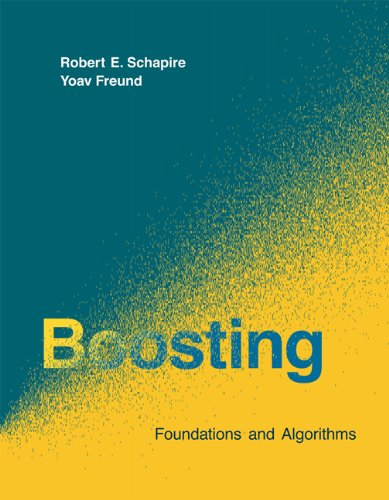
Boosting: Foundations and Algorithms
by Robert E. Schapire, Yoav Freund
Publisher: The MIT Press 2014
ISBN-13: 9780262310413
Number of pages: 544
Description:
Boosting is an approach to machine learning based on the idea of creating a highly accurate predictor by combining many weak and inaccurate 'rules of thumb'. A remarkably rich theory has evolved around boosting, with connections to a range of topics, including statistics, game theory, convex optimization, and information geometry.
Download or read it online for free here:
Read online
(online html)
Similar books
 The Elements of Statistical Learning: Data Mining, Inference, and Prediction
The Elements of Statistical Learning: Data Mining, Inference, and Predictionby T. Hastie, R. Tibshirani, J. Friedman - Springer
This book brings together many of the important new ideas in learning, and explains them in a statistical framework. The authors emphasize the methods and their conceptual underpinnings rather than their theoretical properties.
(40677 views)
 Algorithms for Reinforcement Learning
Algorithms for Reinforcement Learningby Csaba Szepesvari - Morgan and Claypool Publishers
We focus on those algorithms of reinforcement learning that build on the theory of dynamic programming. We give a comprehensive catalog of learning problems, describe the core ideas, followed by the discussion of their properties and limitations.
(8018 views)
 An Introduction to Statistical Learning
An Introduction to Statistical Learningby G. James, D. Witten, T. Hastie, R. Tibshirani - Springer
This book provides an introduction to statistical learning methods. It contains a number of R labs with detailed explanations on how to implement the various methods in real life settings and it is a valuable resource for a practicing data scientist.
(10137 views)
 Statistical Foundations of Machine Learning
Statistical Foundations of Machine Learningby Gianluca Bontempi, Souhaib Ben Taieb
This handbook aims to present the statistical foundations of machine learning intended as the discipline which deals with the automatic design of models from data. This manuscript aims to find a good balance between theory and practice.
(9414 views)